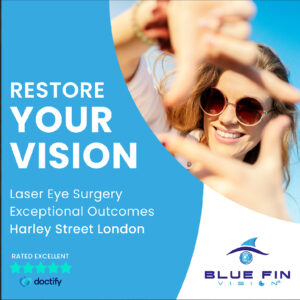Refractive lens exchange (RLE) has become an increasingly popular option for those seeking to improve their vision, especially for individuals who are not suitable candidates for traditional laser-based procedures like LASIK. As people age, they often experience a decline in their vision due to conditions such as presbyopia, cataracts, or other refractive errors. RLE addresses these issues by replacing the eye’s natural lens with an artificial intraocular lens (IOL), offering a long-term solution that can dramatically enhance quality of life.
One of the most significant advantages of RLE is its versatility. It can treat a variety of refractive errors, including nearsightedness (myopia), farsightedness (hyperopia), and astigmatism, as well as presbyopia. Presbyopia, a condition that usually becomes noticeable after the age of 40, makes it harder to focus on close objects due to the natural lens becoming less flexible. This often leads to the need for reading glasses. By replacing the natural lens with a multifocal or accommodating IOL, RLE eliminates the need for glasses or contact lenses, allowing patients to enjoy clear vision at all distances.

The IOLs used in RLE are specifically Refractive lens exchange designed to address the individual needs of the patient. Monofocal lenses, the most basic type, provide clear vision at one focal point—either for distance or near vision. Multifocal lenses offer several focal points, allowing for both near and distance vision correction in a single lens. Accommodating IOLs work similarly to the natural lens by changing shape to focus on different distances, offering a more dynamic solution. Toric IOLs are designed for patients with astigmatism, offering additional clarity by correcting irregularities in the cornea’s curvature. The wide array of lens options ensures that patients can receive customized care tailored to their specific visual needs.
Another key benefit of RLE is that it can provide a permanent solution to refractive errors. Once the natural lens is replaced with an IOL, the new lens is designed to last a lifetime, requiring no maintenance or updates as eyeglasses or contact lenses would. This is particularly appealing for older adults who may have been struggling with deteriorating vision for years and are tired of frequent adjustments to their prescriptions. In fact, many RLE patients report a greater sense of freedom from the constraints of glasses or contact lenses, which can be especially impactful for people with active lifestyles or those who are tired of dealing with the inconvenience of eyewear.
Despite its many advantages, RLE is not without its risks. As with any surgical procedure, there is a small chance of complications such as infection, bleeding, or inflammation. Some patients may also experience visual disturbances, such as glare or halos around lights, particularly at night. However, these side effects are typically temporary and can be managed with follow-up care or adjustments to the lens. Serious complications are rare, and most patients experience significant improvements in their vision with minimal discomfort.
Recovery from RLE is usually swift, with many patients reporting clearer vision within a few days of the procedure. The majority of people can resume normal activities within a week, although it is important to follow post-operative instructions carefully. Eye drops are commonly prescribed to prevent infection and reduce inflammation, and patients may be advised to avoid strenuous physical activities or rubbing their eyes for a short period following surgery. Regular follow-up visits are essential to ensure that the healing process is progressing well and to monitor the position of the IOL.
RLE also offers an effective solution for patients with cataracts, a condition in which the natural lens of the eye becomes clouded and affects vision. In fact, RLE is sometimes used as a treatment for cataracts, as it not only addresses the cataract but also corrects refractive errors, providing improved vision even after the lens is removed. This dual benefit makes RLE a highly effective option for people with cataracts who wish to avoid the need for additional corrective treatments.
In summary, refractive lens exchange offers a comprehensive solution to a range of vision problems, especially for individuals who are not suitable candidates for laser eye surgery. With its ability to correct multiple refractive errors, reduce dependence on glasses and contact lenses, and provide lasting results, RLE has transformed the lives of many patients. As technology continues to improve, the options available for IOLs become even more diverse, allowing for more personalized vision correction. For individuals seeking a life free from the constraints of corrective eyewear, RLE offers a promising and long-lasting solution.